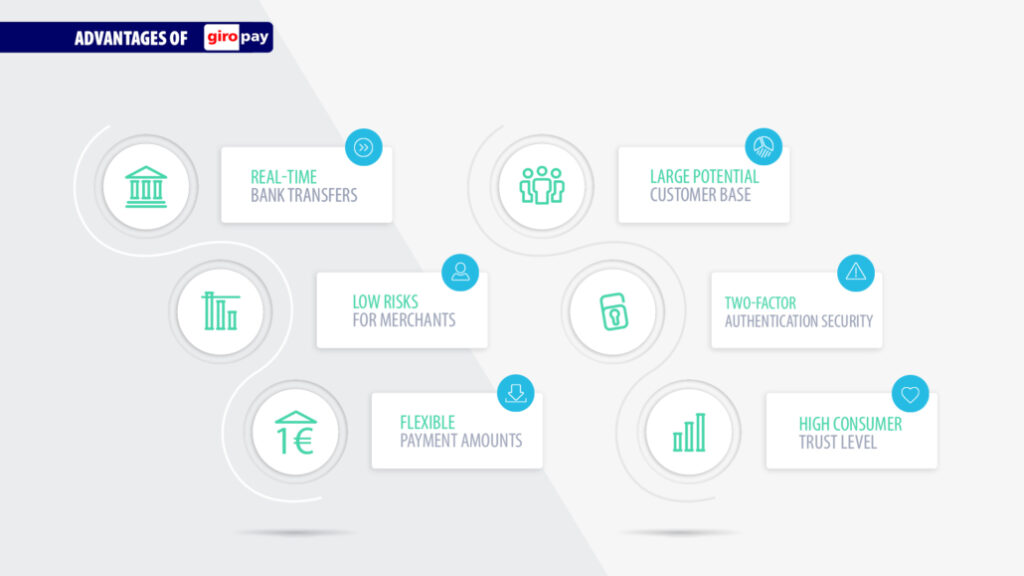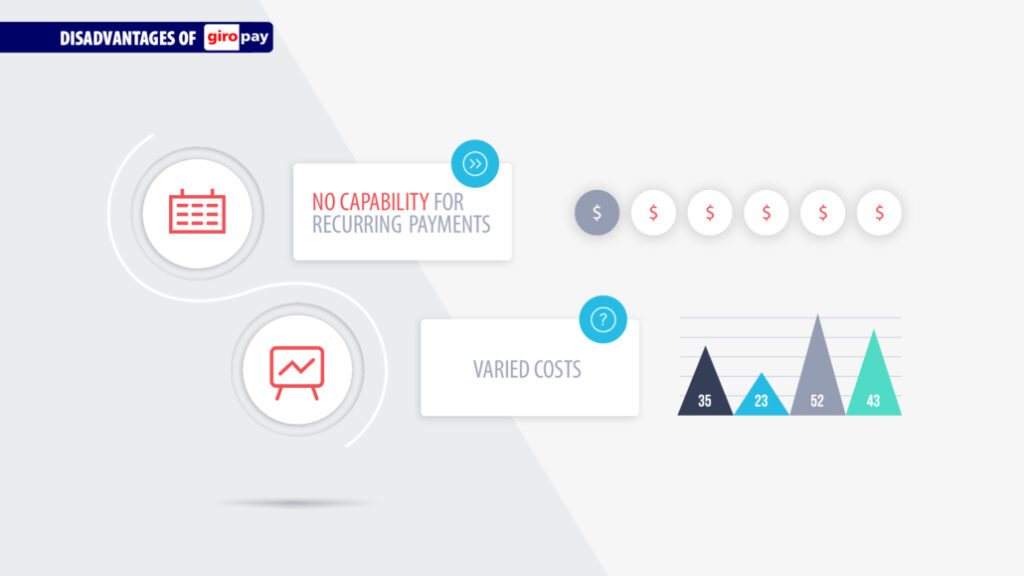Online payment security is a sensitive subject, even when using alternative payment methods like Giropay. Most people (merchants and customers alike) have been on the receiving end of fraud at some point in the form of credit card transactions or other payment practices. Some people refuse to use credit cards online entirely because of their security concerns.
It’s no surprise, then, that consumers and merchants have been looking for a better way to pay, and for those doing business in Germany, giropay could be that better way. This incredibly secure and user-friendly payment system continues to grow in popularity, so should you offer it in your online shop? Let’s get the details.
What is Giropay?
Giropay is a bank transfer system based in Germany, so funds come directly from a customer’s bank account rather than a credit card. This system has been on the scene since 2006, and it’s essentially the German equivalent of eps in Austria.
Since its launch, giropay has continuously grown in popularity among consumers and merchants alike. It integrates with over 1500 German banks, nearly all banks across Germany. Today, this German payment method is used by many large-scale merchants like Lufthansa, Facebook, Microsoft, Eventim, and Deutsche Post/DHL.
How Does Giropay Work?
What makes giropay unique is that payments are processed using the customer’s online banking portal rather than the merchant site. This puts customers at ease because they only have to trust the same bank they’ve been working with for years; they don’t have to put trust in a merchant’s digital security, too.
As a merchant, you’ll integrate giropay as one of the options on your payment page. When the customer clicks on it, they’ll need to select their bank. This will redirect them to their bank’s online banking portal.
When the portal opens, it will display the data for the transaction the customer wants to make. They’ll then input their account number and PIN, along with any other security measures the bank chooses to implement. This will usually be either two-factor authentication or a TAN (transaction number).
With that information verified, the bank will check the customer’s account balance and if they have the transaction amount, it will deduct the money from their balance in real-time and authorize the payment. If there aren’t sufficient funds to cover the transaction, the transaction will be refused.
If the payment is authorized, you’ll receive an immediate confirmation. The system then redirects the customer back to your site which will confirm that the payment was successful. Your payment is guaranteed from the moment it is authorized, and you will receive the funds in your account one banking day later.

Advantages of Giropay
As a merchant, what do you stand to gain from implementing giropay as a payment option? The answer is “a lot,” particularly if you have more than a few customers in Germany. This alternative payment method is a very secure and merchant-friendly payment system that offers several distinct advantages.
- Real-Time Bank Transfers – Your payments bypass credit cards entirely and deal directly with a customer’s bank. However, many bank transfers are slow and take several days to process. This payment method allows you to know instantly whether the transaction is successful.
- Low Risks for Merchants – Giropay offers a payment guarantee. You may have noticed that while the transaction is approved instantly, you don’t receive the funds until one banking day later. In that interim, your payment is guaranteed because they’ve already authorized the transaction. If the payment were to fall through for any reason, giropay would cover it. The German payment also doesn’t support chargebacks, so there’s no need to worry about customers fraudulently refuting the charge after it goes through.
- Flexible Payment Amounts – Many bank transfer systems have significant minimum transaction amounts or restrictive maximums, but not giropay. The minimum transaction amount is only one Euro, and there is no maximum. This makes it a suitable choice for nearly any industry.
- High Consumer Trust Level – Through this payment method, customers complete the payment through their own bank’s online banking portal: a system they likely use often and have come to trust. In addition, giropay doesn’t share any sensitive information like account numbers or credit card numbers with you, the merchant. This allows customers to feel more secure in their purchases, which could make the difference between whether or not they click “buy.”
- Large Potential Customer Base – As we noted, giropay has continuously grown as consumers have sought out more secure options for online payments. As a result, this payment method is connected to nearly all the banks in Germany, which serve approximately 45 million consumers. That opens the door for 45 million potential customers who could choose you over your competitors because you offer this more secure option.
- Two-Factor Authentication Security – Security is a top priority for giropay, so the system requires banks to use two-factor authentication or a similar security measure like TAN for every transaction above 30 Euros. This makes it a more secure and trustworthy system than most for customers and merchants alike.
With all these potential advantages at stake, it’s clear that giropay not only offers security and convenience to your customers but could have a great impact on your bottom line as well.

Disadvantages of Giropay
As many advantages as giropay has, every system has its pros and cons. There are a few considerations to keep in mind if you’re weighing whether to add this payment method in your checkout options.
- No Capability for Recurring Payments – Because giropay requires a high level of security for every transaction, it does not allow recurring payments as an option. This can be a challenge for merchants who use a subscription-based model. Still, some customers could be more than willing to log in and authorize their subscription transactions every month if it means they skip the security risks of credit cards.
- Varied Costs – As with many payment systems, costs to support giropay aren’t readily available online. They can vary based on volume and transaction amounts. To get accurate numbers, you’ll need to take the next step of connecting with a payment provider.
The good news with giropay is that there are far more advantages than disadvantages. Regardless, it’s important for every merchant to weigh their decisions carefully and determine if giropay would be a benefit for their online shop.
Choosing Your Payment Options
As a merchant, there are many factors that go into your choice of payment options. Between security, customer availability, convenience, and costs, it’s enough to make your head spin. Start by learning more about your options and exploring how Macropay can help.